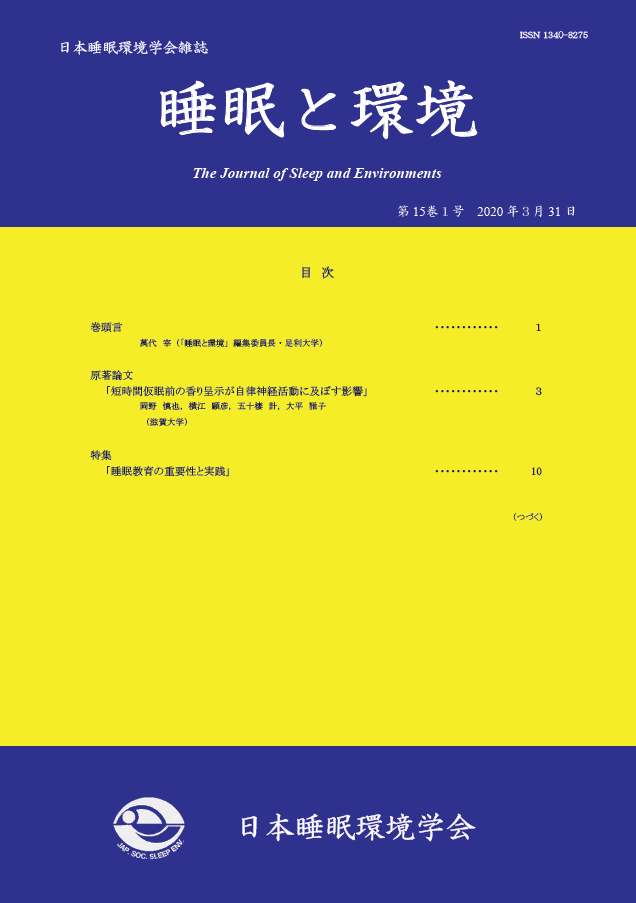Volume 15, Issue 1
Importance and Practice of Sleep Education
Displaying 1-11 of 11 articles from this issue
- |<
- <
- 1
- >
- >|
Original Article
-
2020Volume 15Issue 1 Pages 3-9
Published: March 31, 2020
Released on J-STAGE: September 01, 2023
Download PDF (833K)
Special Feature: Importance and Practice of Sleep Education
-
2020Volume 15Issue 1 Pages 10-11
Published: March 31, 2020
Released on J-STAGE: September 01, 2023
Download PDF (424K) -
2020Volume 15Issue 1 Pages 45-
Published: March 31, 2020
Released on J-STAGE: September 01, 2023
Download PDF (443K)
Review Article
-
2020Volume 15Issue 1 Pages 12-18
Published: March 31, 2020
Released on J-STAGE: September 01, 2023
Download PDF (1385K) -
2020Volume 15Issue 1 Pages 19-26
Published: March 31, 2020
Released on J-STAGE: September 01, 2023
Download PDF (852K) -
2020Volume 15Issue 1 Pages 27-37
Published: March 31, 2020
Released on J-STAGE: September 01, 2023
Download PDF (1455K) -
2020Volume 15Issue 1 Pages 38-44
Published: March 31, 2020
Released on J-STAGE: September 01, 2023
Download PDF (1266K) -
2020Volume 15Issue 1 Pages 46-52
Published: March 31, 2020
Released on J-STAGE: September 01, 2023
Download PDF (930K) -
2020Volume 15Issue 1 Pages 54-59
Published: March 31, 2020
Released on J-STAGE: September 01, 2023
Download PDF (697K) -
2020Volume 15Issue 1 Pages 61-71
Published: March 31, 2020
Released on J-STAGE: September 01, 2023
Download PDF (1487K) -
2020Volume 15Issue 1 Pages 72-76
Published: March 31, 2020
Released on J-STAGE: September 01, 2023
Download PDF (1105K)
- |<
- <
- 1
- >
- >|
